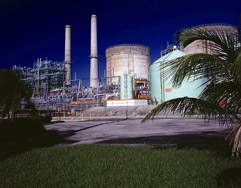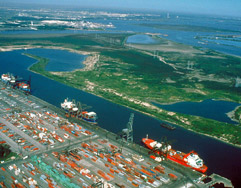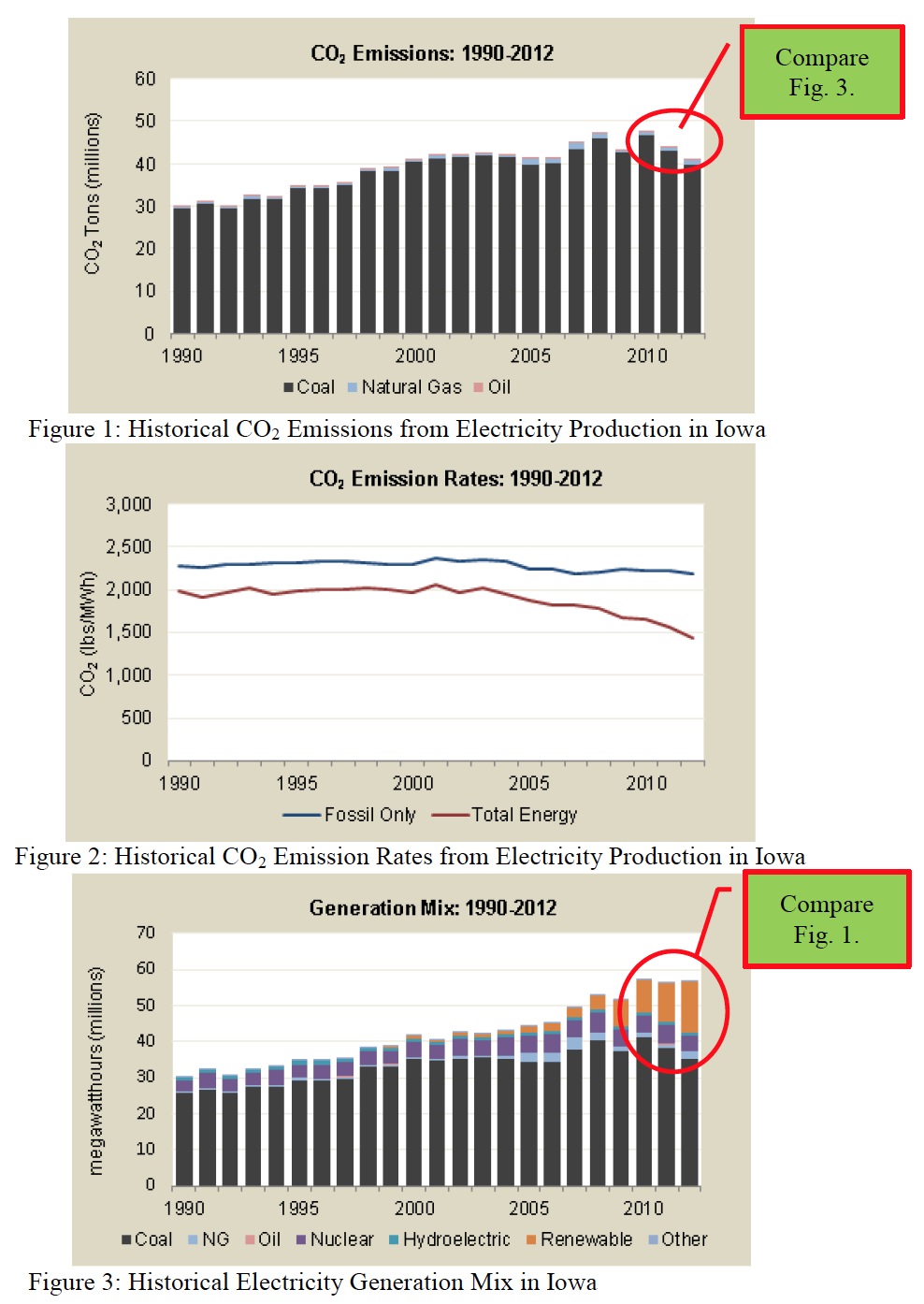IOWA WIND ENERGY ASSOCIATION
The potential for tapping Iowa’s wind resource to generate clean electricity and reduce carbon emissions in Iowa and the region is evaluated for the period from 2015 to 2030, and assessed in light of the EPA’s 111(d) targets. In a conservative scenario it is estimated that Iowa wind could easily contribute a reduction of 15 million metric tons of carbon dioxide annually to the region outside of Iowa, and in a more optimistic but still moderate scenario Iowa’s contribution could easily be over 36 million metric tons annually. Such contributions would go far in helping neighboring states with lower quality wind resources reduce their carbon emissions. As a means of re-ducing GHG emissions, wind is one of the lowest cost options, and indeed, as a means of generating electricity, it is also one of the lowest cost options, typically being less expensive than any form of fossil fuel generation. Moreover, the cost of generation from wind is declining. Although additional transmission infrastructure would need to be built to accommodate a large increase in wind generation, the cost of that additional transmission would be expected to be modest, when spread across the region benefitting from it. Additionally, the economic benefits from wind development are significant.
I. Introduction & Executive Summary
The primary aim of this study is to evaluate the potential for tapping Iowa’s wind resource to reduce CO2 emissions from electric power plants, not only in Iowa but regionally.
In June 2014, the EPA proposed a rule (111(d)) setting the year 2030 target CO2 emissions rate reductions for each state’s power plants. It is in light of that proposed rule that the present study was undertaken. This report finds that the EPA-proposed target for Iowa as a whole will only require modest changes to achieve the goals. Based just on existing and currently-committed wind development in the state alone, and ignoring efficiency improvements and currently planned changes in fossil fuel energy generation, Iowa will likely achieve at least half of the 2030 target by the end of 2015.
Four scenarios for wind deployment were examined in this review:
- 1) a scenario where no more wind development other than what is already announced and planned occurs between the present and 2030
- 2) a scenario where wind is deployed to meet a target of 30% reduction in CO2 emissions by 2030
- 3) a conservative deployment scenario that envisaged an addition of, on average, 500 MW of new wind generation annually from 2015 through 2029
- 4) a moderate deployment scenario which looks at the addition of, on average, 1,000 MW of new wind generation annually over that time frame, along with a very modest increase in turbine performance.
CO2 emission reductions associated with the latter two scenarios are quite significant, and go far beyond the EPA’s initial 111(d) goal for Iowa. Some of Iowa’s neighbors, most especially Illinois, but also Missouri and other states to the east have carbon footprints that dwarf Iowa’s and also have wind resources of lower quality. By exporting much of its wind-generated electricity, Iowa’s wind could play a large role in reducing emissions beyond the state boundaries.
This study also looks at factors affecting the cost of transmission build-outs needed to enable the export of large amounts of Iowa wind power. Although there is uncertainty related primarily to the need and cost of adding transmission capacity, the evidence is that such costs would be reasonable, and an effort to expand Iowa’s wind capacity for export would be quite beneficial economically.
II. Historical CO2 Emissions in Iowa’s Electricity Generation Mix
Iowa’s CO2 emissions, emission rates, and electricity generation mix from 1990 through 2012 are charted below in Figures 1 through 3.i Annual total CO2 emissions from electricity generation increased from 1990 to 2010, from about 30 million tons to nearly 47 million tons. Since 2010, annual emissions decreased to approximately 40 million tons in 2012. Fossil fuel emission rates for CO2 decreased slightly over the period from about 2,300 lbs per megawatthour (MWh) to about 2,200 lbs/MWh. In Figure 2 CO2 emission rates for all electric energy decreased over the period from about 2,000 lbs/MWh to less than 1,500 lbs/MWh. Figure 3 illustrates that while this emission rate reduction for all energy occurred, Iowa’s total generation increased from about 30 million MWh to 57 million MWh. Its generation from fossil sources went from 30 million MWh to about 42 million MWh as shown by the dark gray bars.
Download full version (PDF): The Potential for Tapping Iowa’s Wind Resource to Reduce CO2 Emissions
About the Iowa Wind Energy Association
iowawindenergy.org
IWEA is your source for information on wind energy in Iowa. IWEA will…
- Promote the value of increased use of wind energy in the state.
- Enhance Economic Development for the state and region through the recruitment of wind related industries.
- Speak with a common voice to seek legislation and statewide policies which help the growth of the wind industry.
- Facilitate communication and networking of all stakeholders valuing the growth of wind energy in Iowa.
Tags: C02, Carbon, IA, Iowa, Iowa Wind Energy Association, Renewables, Wind Energy







 RSS Feed
RSS Feed